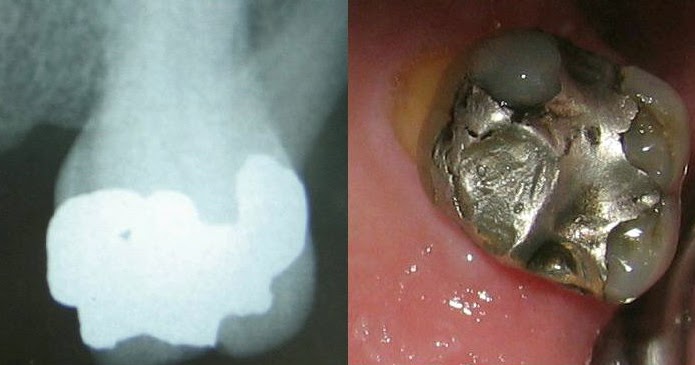To repair cavities caused by tooth decay, dentists use dental amalgam.
Among the metals in dental amalgam are liquid mercury and a powdered alloy of silver, tin, and copper. Dental amalgam contains about half (50%) of its weight in elemental mercury. An amalgam alloy is formed when silver, copper, and tin alloy particles react with and bond to elemental mercury.
“Silver fillings” have been used to describe dental amalgam because of its silver-like appearance, however, this phrase is not encouraged since it fails to accurately describe the amalgam’s components.
When putting dental amalgam, the dentist first removes the decay and then molds the tooth cavity for the amalgam filling. The dentist next combines the encapsulated powdered metal with the liquid mercury to make an amalgam putty under suitable safety circumstances. Placing and shaping this pliable amalgam putty quickly turns it into a firm filler.
Things to Know Before You Get a Dental Amalgam Filling?
You and your dentist should decide on the kind of filling material to be used to cure tooth decay. The following information regarding dental amalgam fillings should help you make an informed decision about your treatment options.
Benefits of Dental Amalgam
- They are more resistant to breaking than conventional fillings.
- Useful in individuals with a high risk of dental decay, for big tooth preparations, and in situations when moisture prevents other materials, such as resins, from adhering to the tooth.
- Less expensive than other types of dental filling materials.
- Used on hundreds of millions of patients throughout the globe for more than 150 years.
Potential Risks Involved
- It contains elemental mercury. It emits a vapor containing low quantities of mercury that may be breathed, making it dangerous for people. Mercury vapor exposure, which may occur in certain workplaces, has been linked to a variety of health issues, including adverse effects on the brain and kidneys.
- Mercury vapor’s neurotoxic effects may be more readily felt by developing nervous systems in fetuses and youngsters. However, no clinical data is available to conclude its adverse effects on pregnant women and the developing fetuses, as well as children under the age of six, including babies who are nursed. Talk to your dentist if you’re worried about long-term health effects as a pregnant woman or parent of a young kid.
- While there is no evidence that mercury from dental amalgam causes health problems in the general population, mercury exposure may offer a higher health risk in the following categories of individuals, who may be more sensitive to mercury-related health problems.
- Women who are pregnant and their unborn children;
- Women want to become pregnant
- Nursing women and their infants and newborns
- Children, particularly those under the age of 6
- Pre-existing neurological illness
- People with impaired kidney function
- Patients having a history of mercury or other dental amalgam components (silver, copper, tin) allergies.
- Mercury or other components of dental amalgam may cause allergic reactions or other sensitivities in certain people (such as tin, silver, or copper). These people are at risk of developing oral lesions or other types of sensitive responses as a result of their usage of dental amalgam.
Do not receive amalgam fillings if you are allergic or sensitive to any of the components of dental amalgam With your dentist, you may consider additional treatment options.
Dental Amalgam: Why Mercury is used in it?
A dental amalgam filling typically consists of about half liquid mercury and half of a powdered alloy of copper, tin, and silver. Mercury is a toxic element. Mercury is utilized to bind the particles of the alloy together to create a filler that is robust, long-lasting, and solid. Mercury is an essential component of dental amalgam because of the unique features it has, it is liquid at room temperature and formulates strong connections with the amalgam alloy. This adds to the amalgam’s long-lasting durability.
Final Words
FDA recommends not to use amalgam alloy fillings and restorations if you fall in any of the risk categories above. Instead, use composite resin and glass ionomer cement if your dentist feels these materials are acceptable for your tooth’s location and structure, and if you have no prior history of hypersensitivity or allergic response to these materials.




You must be logged in to post a comment.